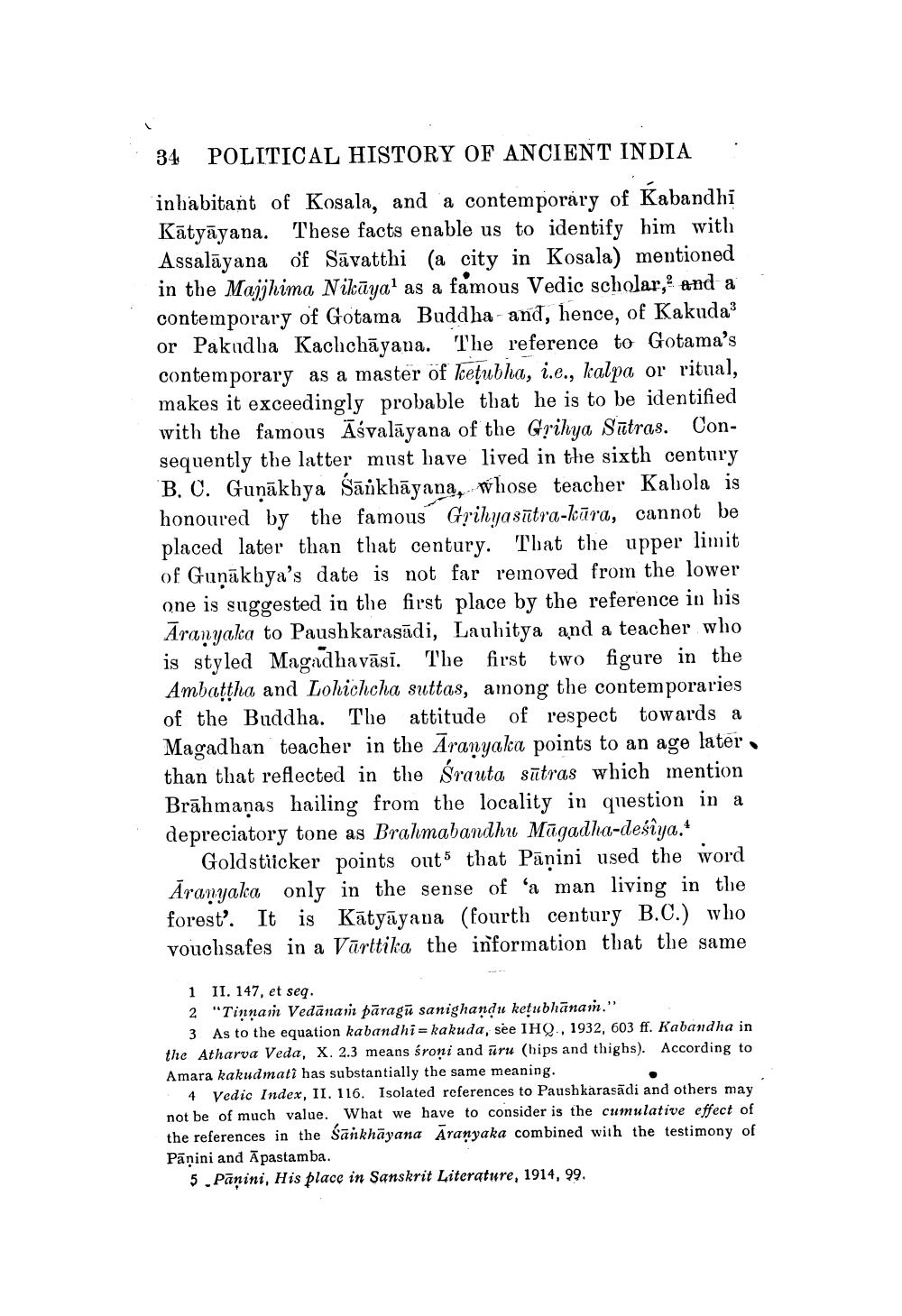________________
34 POLITICAL HISTORY OF ANCIENT INDIA inhabitant of Kosala, and a contemporary of Kabandhi Kātyāyana. These facts enable us to identify him with Assalāyana of Sāvatthi (a city in Kosala) mentioned in the Majjhima Nikāyal as a famous Vedic scholar, and a contemporary of Gotama Buddha-and, hence, of Kakuda? or Pakudha Kachchāyana. The reference to Gotama's contemporary as a master of kețubha, i.e., kalpa or ritual, makes it exceedingly probable that he is to be identified with the famous Āśvalāyana of the Grihya Sūtras. Consequently the latter must have lived in the sixth century B. C. Guņākhya sāúkhāyana, those teacher Kabola is honoured by the famous Grihyasūtra-Kūra, cannot be placed later than that century. That the upper limit of Guņākhya's date is not far removed from the lower one is suggested in the first place by the reference in his Aranyaka to Paushkarasādi, Lauhitya and a teacher who is styled Magadhavāsi. The first two figure in the Ambattha and Lohichcha suttas, among the contemporaries of the Buddha. The attitude of respect towards a Magadhan teacher in the Aranyaka points to an age later, than that reflected in the Srauta sūtras which mention Brāhmaṇas hailing from the locality in question in a depreciatory tone as Brahmabandhu Mūgadha-desîya.
Goldstiicker points outs that Pāṇini used the word Āranyala only in the sense of a man living in the forest. It is Kātyāyana (fourth century B.C.) who vouchsafes in a Vārttika the information that the same
1 11. 147, et seq. 2 "Tinnam Vedānai pāragū sanighandu ketubhānam."
3 As to the equation kabandhi = kakuda, see IHO, 1932, 603 ff. Kabandha in the Atharva Veda, X. 2.3 means śroni and ūru (hips and thighs). According to Amara kakudmati has substantially the same meaning,
4 Vedic Index, II. 116. Isolated references to Paushkarasādi and others may not be of much value. What we have to consider is the cumulative effect of the references in the Sankhāyana Aranyaka combined with the testimony of Pāņini and Apastamba.
5. Panini, His place in Sanskrit Literature, 1914, 99,
not be vedic Index, II. 116. antially the same mea Chips and thighs).




